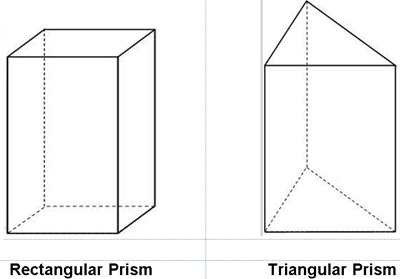
A prism is a polyhedron, or three-dimensional figure, that has congruent polygons as bases and has parallelograms (often rectangles, for our situations) for lateral face. Prisms are the same size and shape from one base to the other.
Prisms are named by the shape of their base(s).

If you make a cut through the prism parallel to the bases, and look at the end of your slice, you would see a cross-section congruent to the bases. All cross-sections are congruent polygons that are congruent to the bases, or top and bottom.
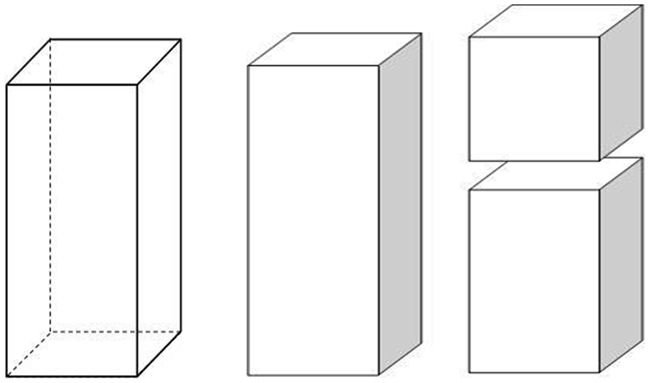
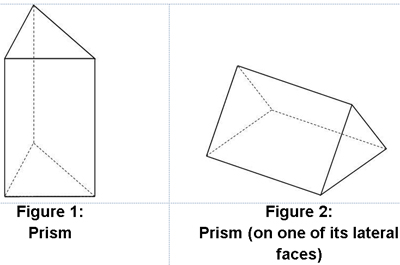
Occasionally a prism, such as the one below, will be sitting on one of its lateral faces rather than on one of its bases, as in Figure 4. Being on its side does not change the fact that the triangles are still the bases of this prism. The rectangles are still the lateral faces.
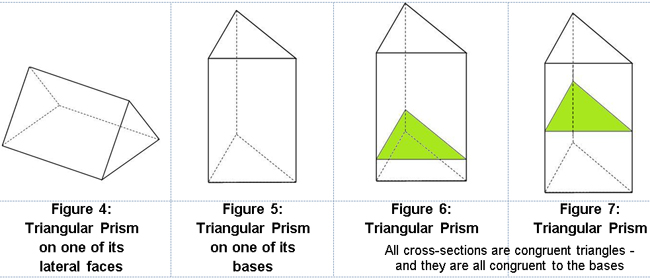
For a triangular prism, all cross-sections are triangles that are congruent to the bases.
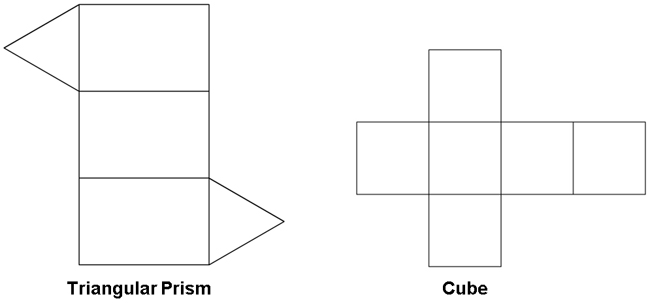
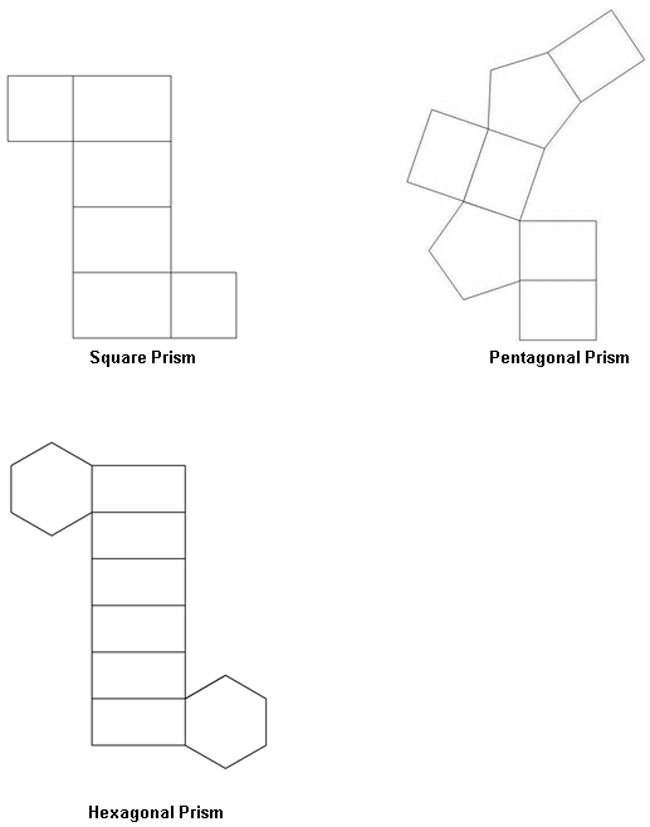
Close this window/tab to return to the lesson.